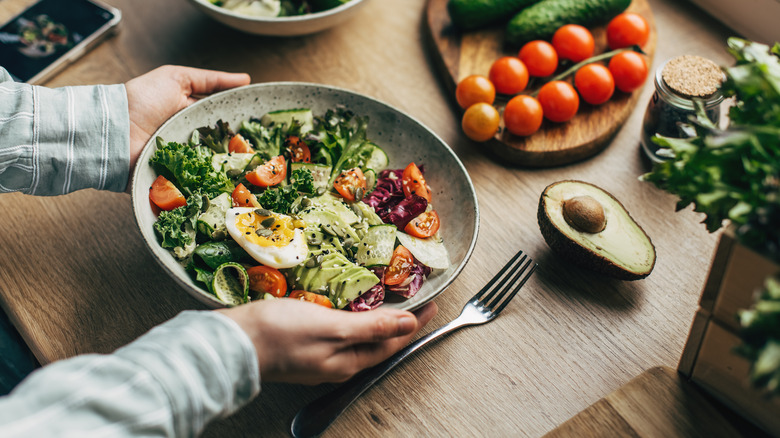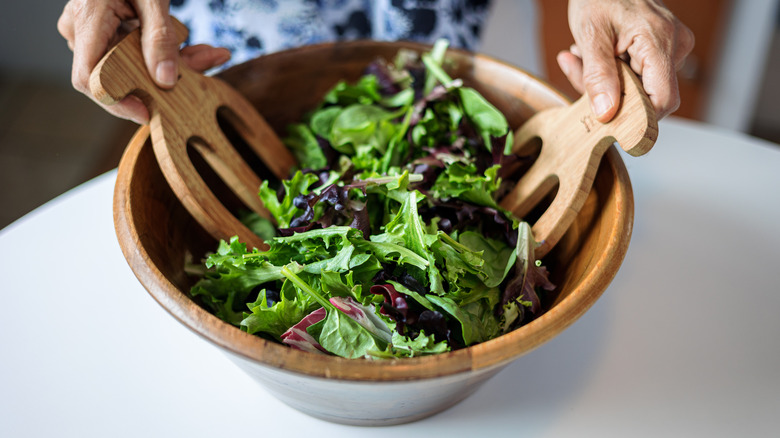Ina Garten Doesn't Serve Her Salads Cold, And Neither Should You
When it comes to culinary guidance, Ina Garten is a trusted source of information for many home chefs. The beloved cookbook author and television personality is quick to share recipes and tips on a variety of dishes, including salad preparations. According to the esteemed chef, allowing cool salad ingredients to reach room temperature before serving can have a major impact on the taste of the ingredients, as well as their texture. As a result, avoiding cold serving temperatures could elevate the already impressive 50 best salad and dressing recipes.
Garten doesn't elaborate on why room temp salads are best, but foods are generally tastier when not served chilled. It has to do with how a person's taste buds perceive flavors, and foods that are 59 degrees or cooler typically have less of an impact. It's likely that Garten discovered this scientific fact when developing her own salad recipes, which can feature ingredients like bell peppers, calamata olives, red onions, cucumbers, and homemade vinaigrette.
Does the room temperature tip apply to all salads?
It should be noted that Ina Garten's admittedly enlightening tip doesn't necessarily apply across the board. Some salad preparations can actually benefit from chilling depending on what ingredients are included. Consider tomato-based preparations, such as caprese salad or tomato-watermelon with feta cheese. Cooler temperatures allow the brightness and acidity of the ingredients to really stand out, which makes for a refreshing dish. In the same token, some noodle salads are intended to be served cold, as chilling the ingredients encourages all the distinct flavors to merge deliciously.
Chilling also benefits broccoli almond salad, as it keeps the ingredients nice and crisp. This salad also does well with a bit of bacon, which should be added last. This helps maintain a nice contrast between the warm and cold ingredients, which makes for a more satisfying preparation. In addition to chilled and room temperature preparations, some salads are intended to be served warm, including recipes featuring roast tomatoes, figs, and feta with tarragon.
How to maintain salad quality in room temperatures
If you're wondering just how long salad can sit out before safety becomes an issue, the absolute maximum is two hours. According to the FDA, produce and other perishable foods, like meat and eggs, have a greater chance of developing harmful bacteria when unrefrigerated for longer than two hours. In the event temperatures are higher than 90 degrees, this time should be cut down to one hour, as warmer temperatures accelerate the growth of bacteria in food.
Along with safety, certain steps ensure that your greens and other veggies remain fresh. In this case, how you dress the ingredients can make all the difference when it comes to soft, wilting leaves, as bad textures can detract from the flavors in the preparation. Instead of adding dressing to the salad directly, add dressing to the serving bowl, and then add your ingredients. When it's time to serve the salad, you can toss it as you normally would to evenly disperse the dressing. While Ina Garten's serving tip can enhance the flavor of ingredients, it shouldn't come at the expense of food safety or quality.


